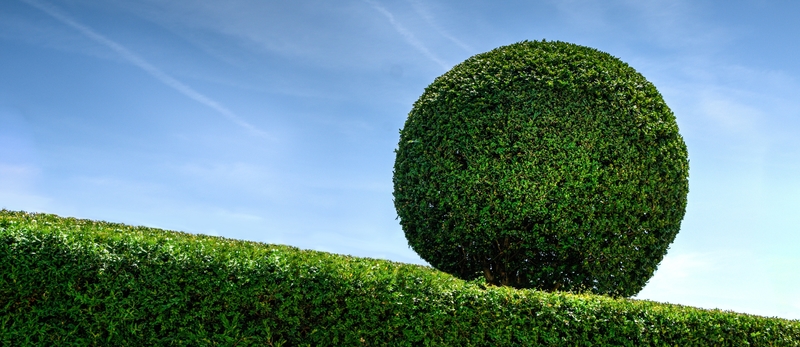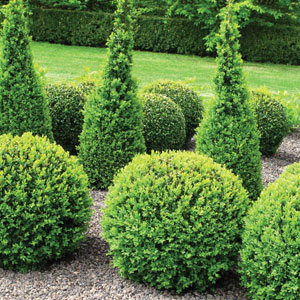Japanese Box Growing Guide

Japanese box (Buxus microphylla var. japonica) is a traditional favourite for creating formal evergreen hedges. Sporting a compact, dense form, and glossy green foliage, it’s also ideal for topiary. This hardy and attractive plant lends a wonderful structural element to your garden, limited only by your imagination.
Although members of the Buxus genus are not fast growers, the Japanese variety is the speediest among them, reaching maturity in 3-5 years.
How To Grow Japanese Box
Climatic Conditions
Japanese box tolerates more heat than the other Buxus varieties. It will grow in cool through to mild tropical climates.
Positioning
An open, sunny position is best for Japanese box, but it will tolerate shade.
Landscaping Uses
When planning a Japanese box hedge, height is a factor to consider. They can grow up to 1m tall, so they work well as a border for tall-growing flowers, larger shrubs and small trees. They’re also great in pots.
Soil Preparation
Soil should be well drained to ensure that roots do not become waterlogged, as box plants dislike wet feet. Dig soil over the well and add organic matter such as compost.
How to Plant
If you want to create a Japanese box hedge, spacing is important. As a rule, position plants in a row at a distance of 40cm apart. Unless pruned to keep them smaller, individual plants can grow up to 70cm wide by 1m high in three years.
When starting a hedge, it’s not a bad idea to buy a few spares and plant them into pots. That way, if one of the plants in the ground becomes damaged, you can replace it with one of a similar size.
You can also grow individual specimens. When planting into pots, plant in soil at the same level as the pot edge to allow dense growth down to soil level.

Maintenance
Regular deep watering in dry spring and summer conditions is required, particularly while plants are becoming established. A drip watering line is often a convenient method, and mulching helps to conserve water and keep roots cool.
Once established, Japanese box hedge care is largely about pruning. Do this regularly to prevent a bushy or straggly look. Any hard pruning should be done in late winter. If you’re looking to train plants into shape, this may need to be done several times during the growing period. For more informal plantings or specimen shrubs, trim lightly once or twice during the growing season to encourage compact growth.
When shaping your hedge, go for a wedge shape, with the top branches trimmed slightly narrower than the lower ones. This allows all branches to access sunlight, resulting in a healthier plant with dense foliage right down to ground level.
Ready to add form and flair to your garden?
Garden Express has potted Japanese box plants in stock now. All that’s missing is your imagination!







